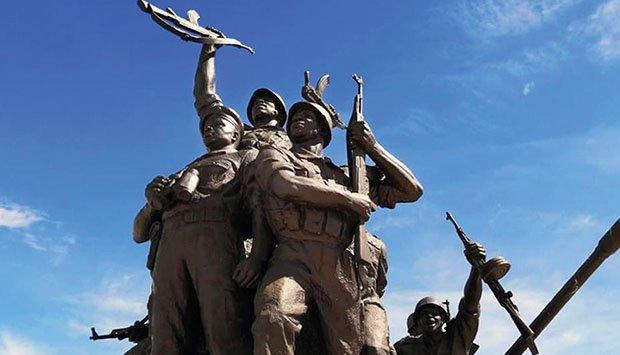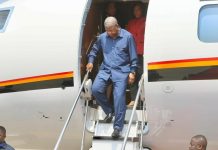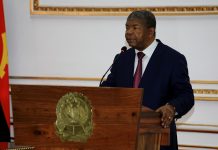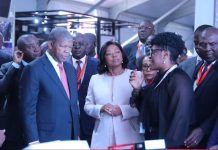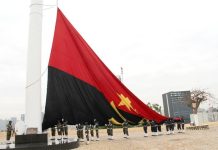Africa-Press – Angola. Let’s continue with this reflection, to later incorporate other data. In the context of this approach, of a strategic nature, it should be noted that there were two strategic decisions by the State.
The first decision belongs to the Angolan State, which started from the principle that it was essential to conduct strategic offensive operations against UNITA’s strategic objectives, thinking that in this way they would weaken the guerrilla forces and put UNITA at a disadvantage. once UNITA and the South African Defense Forces (SADF) were defeated, it would be possible to immediately exercise control over the territory in the south-east direction.
The second decision belongs to the South African State, which decided to carry out strategic counter-offensives to counteract the designs of its opponent; prevent the annihilation of UNITA and prevent the advance of opposing forces towards the southeastern border. But we also have to add to the two strategic government decisions, UNITA’s strategic decision. From the point of view of guerrilla strategy, it was essential to continue the expansion of the guerrillas to the North; pressure in the East and Center. Avoiding, in this way, the collapse of its coordinating political center. This was the nature of the strategic game at that juncture, but everything would be decided on the military battlefield.
Let’s move on, however, to the operational and tactical strategic levels in concrete. When FAPLA’s strategic offensive movements started, everything indicated that the military objectives were within reach due to the initial success of its forces towards Mavinga. strategic offensive by the South African Defense Forces (SADF) stalled the FAPLA. These, in the midst of heavy fire, maneuvered, fought and went on to defend the Cuito Cuanavale region, in accordance with the orders of the Front command. In this sense, the decision taken by the command of the Front Southeast of the FAPLA, in ordering the passage to the defense of its units in two echelons, symbolized the need to fight a strategic defensive battle with the means at its disposal and others that would certainly be added by the superior command.
It is also necessary to realize that the Angolan-Cuban military group organized the defense with the desired elasticity and placed its artillery assets in positions that would allow it to reach the enemy forces. Likewise, from a defensive point of view, the defense had “a series of gunners and tanks deployed in line”, as well as there were about “11 brigades” deployed in “open and low field”. Lieutenant General Fernando Mateus, from the FAPLA group, made the following observation: “our defense system was reduced in distance by more than seven kilometers. We had nine kilometers ahead of the defense line, with possibilities of shooting down the enemy” . This defensive system was advantageous and favored the grouping of FAPLA and FAR.
Apart from this defensive organisation, it is essential to point out that the FAPLA/FAR defense team worked in coordination with the Air Force Arms and anti-aircraft defense, and did not lack support from the rear. The bombardments and strikes by the Angolan-Cuban air squadrons were essential, as they neutralized many of the enemy’s offensive movements and attacked their positions. Thus, groupings of South African and allied troops suffered significant casualties.
Also, during the course of the fighting, the South African side fired 20,000 projectiles of 150 mm caliber against the FAPLA/FAR defense lines. eighty-two tons of bombs, until November 30, 1987, as evidenced by the then FAPA/DAA records. . Enemy forces also had severe losses in air assets due to “air ambushes” by FAPLA units.
Indeed, these issues contributed, as a whole, to the strength of the strategic defense of the FAPLA/FAR in Cuito Cuanavale. Thus, the impregnable fortress of Cuito Cuanavale remained standing.
However, what was the real situation of the South African Defense Forces (SADF) on the battlefield at that time? Strategic and tactical affairs writer Kelly Bell interpreted the state of South African forces as follows:
“The South African refusal to take casualties, combined with increasing Marxist resistance, caused operations to drop by half. Stalemate would ensue. (…)
With the aim of reducing the conflict, Pretoria implemented containment tactics. The 82nd Brigade was brought in to relieve other SADF units that were exhausted from the fighting (…). A new attack launched on March 23, Operation Packer, squeezed FAPLA forces into an ever-shrinking enclave around the Cuito Cuanavale bridge, and the 82nd Brigade initiated an extensive minefield to immobilize the enemy during the ensuing campaign.
This reading of the columnist characterizes very well the state of mind and low morale of the South African forces, but the accentuated cut of the reality of the battlefield is also visible. That is, the South African Defense Forces (SADF) introduced this and other units, as well as launched offensive actions. But these resulted in total failure due to the artillery fire barriers and the consecutive blows of the FAPLA/FAR air squadrons. Even so, its armored units tried to advance, but they fell in the minefields. In this way, the South African units were permanently paralyzed and the retreat began.
Faced with this reality of the battlefield, the following questions arise: What was the concrete outcome of the battle? What kind of battle took place? What are the military and political consequences of the battle? The answers, as a whole, are contained in the third part of this communication.
Evaluation and meaning of the battle
First of all, it should be noted that the FAPLA Southeast Front command took, in November 1987, the right decision, from the strategic-operational point of view, when it ordered the passage of its troops to the defence. From a strategic point of view, this command carried out a defensive strategic maneuver in the form of retrograde. That is, the command of the Southeast Front decided to take advantage of the favorable terrain conditions of Cuito Cuanavale and its natural obstacles, to fight in more advantageous conditions. With the change in attitude and strategic direction, the reorganization of forces on the ground competed with the commands of the FAPLA Brigades. But even so, it was necessary to put higher-level military entities on the ground, in search of better coordination of defensive efforts between the units, the Front command and the General Staff. The depth of the strategic defensive operation was established according to the dynamics of the combats.
As for its duration, the strategic defensive operation of Cuito Cuanavale depended, to a great extent, on the developments of the offensive and defensive combats. These were the main operations and tactical actions, but there was no violent clash between the forces of the parties. In the context of battles, violent shock is of “considerable value.” But, in truth, the parties did everything in pursuit of strategic change. At this point, FAPLA/FAR’s strategic defensive efforts were more assertive.
From the point of view of duration, the Battle of Cuito Cuanavale lasted four months. That is, it began in November 1987 and ended on March 23, 1988. In other words, it began with the passage of FAPLA to defense and culminated with the South African decision to end the strategic offensive battle, due to the breach of combat. Strategically speaking, a battle ends when one of the contenders recognizes the “break in the combat condition”. Faced with this military position, the command of the South African Defense Forces (SADF) decided to withdraw its forces from the battlefield, but This way, the subsequent military developments, which took place in the Southeast and Southwest directions, do not fit into the context of the Battle of Cuito Cuanavale.
In the context of the present strategic approach, it is also essential to value the strategic conduct of the war and the role played by the FAPLA military high command, particularly the leader of the war’s strategic efforts, Commander-in-Chief José Eduardo dos Santos. From the point of view of strategy, this point is central.
In this way, the strategic significance of the Battle of Cuito Cuanavale, according to Commander-in-Chief José Eduardo dos Santos, boils down to the following understanding: “In this struggle, apartheid was defeated and all its allies and supporters lost face. The Republic of Angola played a major role in exemplary participation with the FAPLA (Popular Armed Forces for the Liberation of Angola) in large-scale battles against South African army units in the provinces of Cunene and Cuando Cubango, which it illegally occupied, and where they were defeated in the localities of Cuito Cuanavale, Chipa and Calueque.
The battle of Cuito Cuanavale was one of the most important that took place in Africa south of the Sahara, between Angola and South Africa, after the Second World War. More than 24,000 men participated in it. On the side of Angola, more than nine thousand men fought, with 62 tanks, 51 armored cars, 113 pieces of artillery, 288 transport vehicles, two squadrons of combat aircraft and one of support and reconnaissance aircraft, a squadron of support helicopters and rescue.
The victories paved the way for the signing in New York, in December 1988, of the agreement between Angola, South Africa and Cuba, under the mediation of the United States of America, putting an end to the regional conflict and allowing the independence of Namibia, the liberation of Nelson Mandela and the abolition of the apartheid system. In this way, the total liberation of Africa was won and one of the greatest dreams of our continent was realized”.
Conclusions
The Battle of Cuito Cuanavale is, par excellence, a defensive strategic battle. It entered the annals of military history in Southern Africa, as it shaped the region, from a political point of view, as a whole. of liberation struggles, in the light of the great ideals of the Committee for the Liberation of Africa of the OAU. From the point of view of the art of war, it inaugurates the emergence of the concept of medium-intensity war, taking into account the scale of offensive and defensive combats, means and men. Thus, it is legitimate to introduce the concept of medium-intensity war into the typology of wars. The Battle of Cuito Cuanavale is above the battles of low-intensity wars.
For More News And Analysis About Angola Follow Africa-Press

